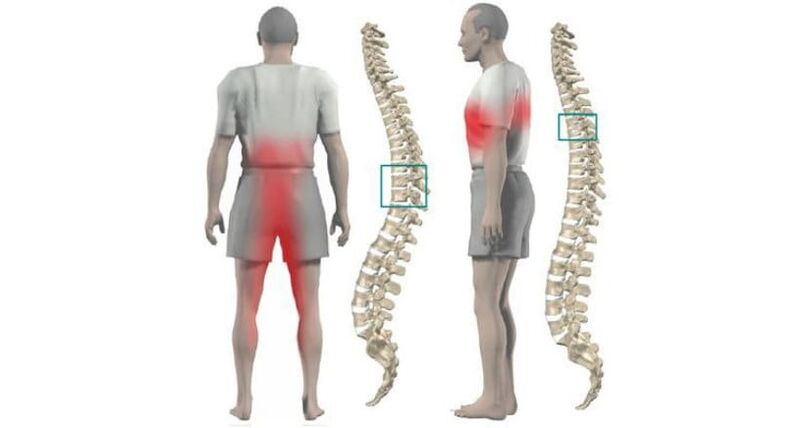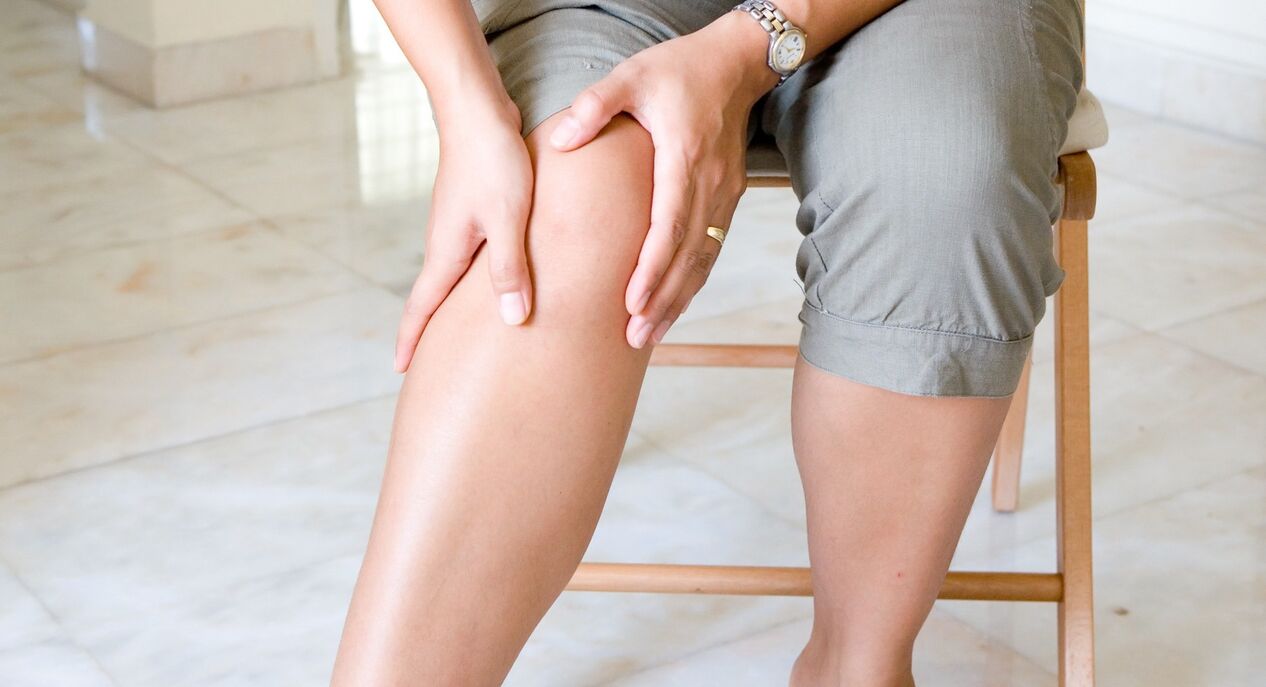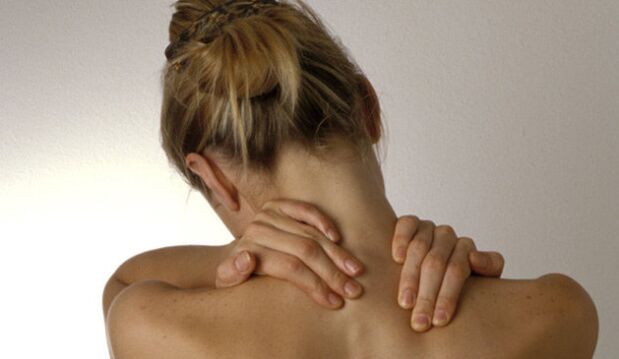The "pearl necklace" of the spine needs careful attention, if there are no proper prevention measures for spinal diseases, symptoms of osteonecrosis will appear. Treatment in this case is prolonged, it is not possible to completely restore the integrity of the spine and discs.

In general, osteonecrosis is considered a change in the bone tissue, ligamentous apparatus, cartilage, and discs of the spine. This process takes a long time, the changes do not appear "sudden" but are felt by themselves with the first characteristic signs and symptoms. Usually, pain mainly occurs when nerve fibers, soft tissues, or blood vessels are compromised. Signs of osteonecrosis directly depend on the stage of the disease and the area of damage, and the treatment of each stage is different.
Clinical picture
An upright gait is a distinguishing feature of a person who is homo sapiens, and at the same time, an upright posture is a major cause of the development of osteonecrosis. Not a single representative of quadrupeds is familiar with the symptoms of osteonecrosis. When walking straight, the vertebrae are subjected to a large load, and over time they undergo changes, deformation occurs, the spine can no longer perform its functions fully.
Four groups of changes are characteristic:
Neurological syndrome
With symptoms of nerve damage, there may be loss of skin sensitivity or decreased muscle strength. With degenerative spine disease, the first sign of autonomic dysfunction can be considered pain, which is the result of compression or irritation of the spinal roots. The first signs are localized in a limited area of the back, where pathological changes begin. With progression, the pain gradually "spreads" throughout the parts of the body located in the inner region of the pinched nerve root. Primarily, the pain can be given in the arm or leg, this condition often forms a false idea that the diagnosis and treatment are not done properly.
In neurologic syndromes, symptoms of motor dysfunction develop less frequently than sensitization. If this occurs, then symptoms of partial or complete loss of mobility of the arm or leg, e. g. with sacral-lumbar degeneration of the spine, left or right lower limb paralysisis expressed.

Static syndrome
The first symptoms appeared when changes in the vertebrae began. As a result, incorrect posture develops: scoliosis, scoliosis or scoliosis. In difficult cases, there is a limitation of mobility of the articular surfaces of the spine, signs of this are manifested in the inability to fully straighten or turn the head.
Vascular syndrome
Spinal vascular problems develop for the following reasons:
- Low tone of sympathetic NS (sign of chronic ischemia of internal organs).
- With local compression of blood vessels by the vertebrae is changed or their processes. Signs of osteonecrosis in this case are manifested in a violation of the blood supply to the brain when the great vessels are compressed. Symptoms of hypoxia include dizziness, poor blood supply to the inner ear, or nausea. Symptomatic treatment, as a rule, does not yield serious results.
Nutritional syndrome
Such symptoms of osteonecrosis are characterized by the appearance of ulcers on the skin, as a result of tissue malnutrition. Skin lesions appear in combination with neurological and vascular factors. The exact signs depend on which part of the back is affected.
Typical manifestations of the disease
Each part of the spine has characteristic signs of osteonecrosis, according to which a chiropractor will diagnose the disease in men and women. According to these symptoms, you can understand which part of the back is affected and what treatment is needed first.
There are several types of osteonecrosis: thoracic, cervical, lumbar, sacral and mixed, when localizing the signs are not local, but diffuse. The first signs of the development of osteonecrosis in women and men begin to be felt with small dull, unpleasant, crunching pains, usually osteonecrosis in the chest, pain appearing in the area. heart. Ideally, treatment should be started at this stage, then it will be possible to avoid all problems in the future.
Furthermore, signs of osteonecrosis become apparent, and painful sensations begin to appear in the hands or feet. The pain in the spine increases with any load, and gradually it becomes difficult to perform the movements that involve forward bending. The more bone degeneration manifests, the more limited the mobility of the back is, the thin discs gradually lose their flexibility, the distance between the vertebrae decreases, and mobility is lost. The muscles begin to work in "emergency mode", constantly being stretched, supporting the vertebrae to prevent them from pulling closer together and completely destroying the discs.
Tightened muscles cause further discomfort to a person, increased tension, pain, increased symptoms of osteonecrosis.
Cervical disease
Symptoms of cervical fibroids often "hide" under the guise of other diseases. The first sign of a neck problem is a headache that cannot be relieved by conventional pain relievers. It starts at the back of the head, goes to the temples. Discomfort increases after a long time in one position; Numbness in the arms, shoulder blades, and shoulders is often present. With strong compression of nerve fibers, paralysis or paralysis of the hand is possible.
When blood vessels are invaded, signs of a stroke will appear:
- Tinnitus, dizziness - indicates poor blood flow in the cochlea and semicircular canals.
- Loss of vision, flies flying in front of your eyes - proving that the optical apparatus is poorly nourished.
- Severe oxygen starvation of the brain - may manifest with sudden loss of consciousness, especially if cervical osteochondrosis is accompanied by atherosclerosis.

Hiccups, feeling of lack of air, shortness of breath, and panic attacks "speak" of damage to the sciatic nerve. The phrenic nerve is part of the cervical plexus and is directly involved in regulating the frequency and depth of breathing.
Breast disease
Signs of thoracic cystic fibrosis are variable, although this part of the spine is less commonly affected, both in women and in men. Pain is clearly localized: in the upper abdomen, in the shoulder blades and between the ribs. But often osteonecrosis "hides" behind signs of intestinal or renal colic, angina, or cholecystitis.
Symptoms suggesting damage to one or another segment of the chest:
- Upper thoracic segment. Sensation of a lump in the throat, violation of the act of swallowing, coughing.
- Mid-thorax. Symptoms mimic inflammation and ulceration of the stomach (stomach pain) and symptoms with arrhythmias and increased blood pressure (myocardialgia).
- The lower part of the thorax. Symptoms of bowel disturbances and signs are similar to those of appendicitis.
Lumbar disease
Signs of damage to this part are very common, but the first signs often cause them to feel pain in the lower back and legs, loss of sensitivity and numbness of the skin in the lower extremities.
Changes in bright areas, characteristic symptoms:
- Pain and low back pain are observed after exertion.
- When motor nerve fibers are compressed, paralysis and paralysis of the legs develop.
- Nerve and blood vessel compression in men and women leads to dysfunction of the pelvic organs.
It should always be remembered that spondylolisthesis is a latent and insidious disease. You can treat the respiratory, genitourinary, or gastrointestinal tract for many years, but not get positive results from the therapy. Therefore, in the event of signs of disease, it is reasonable to refer primarily to a neurologist, and not to a cardiologist, therapist or gastroenterologist.







































